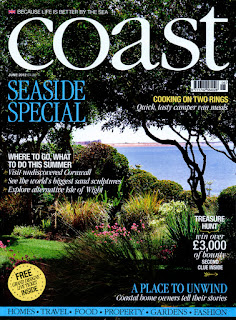Strindberg
Mr PWP designed flyers and invites for Sue's book launch tomorrow.
It has got rave reviews so far.
What a strange coincidence that I was looking here and found this:
Cornish Paintings 2009-2010, Tom Flynn
Walking with friends some months ago through the rugged
Cornish countryside of Penwith Moors outside Penzance, we happened upon
the stone remains of the Bodrifty iron Age roundhouse - a series of
weathered granite boulders marking the boundary of the ancient
settlement. For several minutes we stood within the stones' embrace,
gazing out across the expanse of knotty gorse and bracken towards the
sea as the wind blew and rain-laden clouds scudded by. This was not a
picturesque view to please the eye, but a scene more deeply stirring,
chthonic, mysterious, and unforgettable.A vivid memory of that day returned recently on seeing some of Hannah Woodman's paintings. Somehow, in a series of agitated gestural marks she had captured the archaic essence of the Cornish landscape and its often turbulent weather conditions.
Woodman's paintings are largely devoid of human presence save for the markers of human habitation such as lanes, paths, ragged fencing, telegraph poles or oblique references to distant buildings, all of which provide an armature for her expressive layers of impasto.
Woodman is a native of the West Country and her paintings testify to her profound respect for the region's indefinable genius loci. Clearly she is not setting out to produce an accurate visual record of a place - fidelity to the motif is not her primary concern. Instead she seems concerned to embed her emotional response to the landscape within the paint itself. In this respect her work has more in common with the remarkable if little-known paintings of the late nineteenth century Swedish playwright and artist August Strindberg than with the familiar West Country modernist tradition.
Like Woodman, Strindberg's approach was tantalizingly poised between figuration and abstraction as he sought to "imitate nature's way of creating". Woodman too seems to be in pursuit of some primeval quality in the landscape. To that end she occasionally makes use of a palette knife (as did Strindberg), building up the surface, pushing the paint around, attacking it, coaxing it into new configurations that approximate her remembered experience of the place that inspired her work.
Woodman will often start a painting and then return to it later when her previous marks now begin to function as a spur to further exploration. Those marks may already harmonize with her original memory of the place, or they may suggest an altogether different set of coordinates. The result is a creative tension between the demands of the paint and her own exploratory instincts. At one moment she will be at close quarters, immersed in a vigorous physical engagement with the canvas or board; at the next she will be standing back, meditating on the point reached. At some point in that two-way process, the image coalesces and the painting will declare that it's time to stop.
A notable aspect of Woodman's approach is her tendency to place the horizon line in the centre of the canvas or two thirds of the way up. This is in marked contrast to that other great landscape tradition, that of seventeenth-century Dutch painting, where the focus if so often on "the great vault of the sky". By emphasizing the land, Woodman's paintings beckon the eye deeper into the picture space, prompting our curiosity about what lies beyond that field, over that hill, just round that turn in the road, or through those trees. This makes us feel grounded and more intimately connected to the artist's own experience.
Some of Woodman's recent paintings were inspired by the bleak winter of 2009-10 and the uncommon occurrence of snow in the West Country. Looking at her luscious drifts of creamy oil paint, it is almost as if she has gathered up the snow and carried it back to her studio, better to conjure and fix her experience of the wintry scenes around her studio in a remote corner of Gwithian, West Cornwall.
Tom Flynn,
London, 2010



Comments
Post a Comment